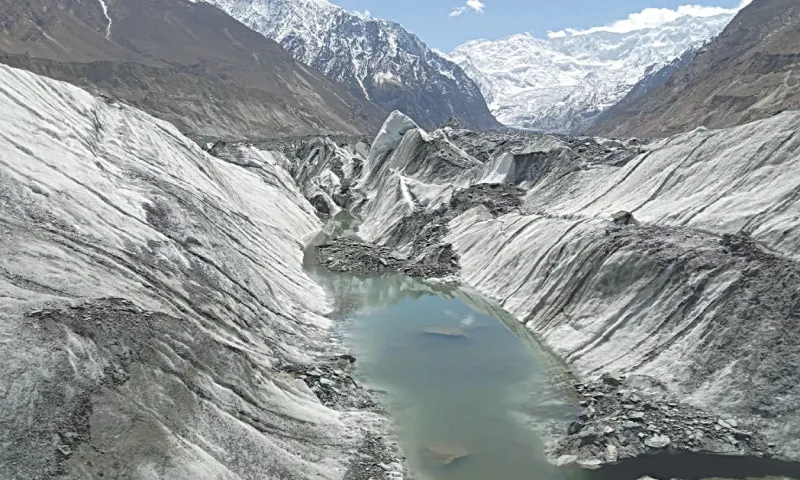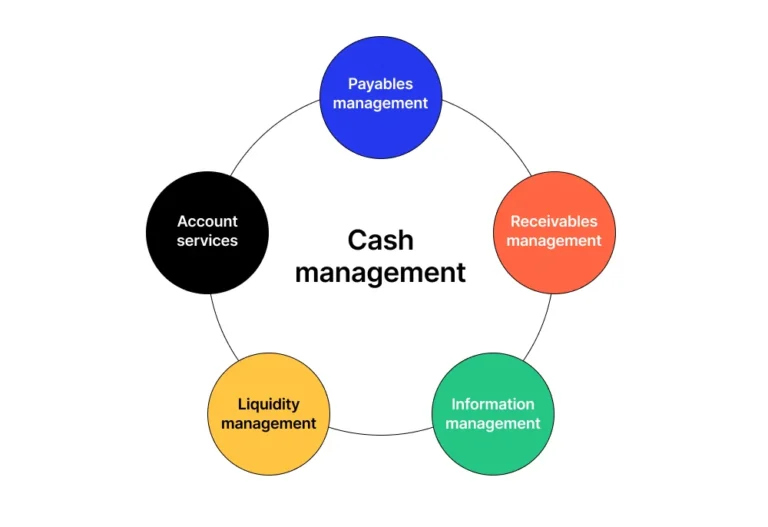Introduction
Nestled in the heart of the mighty Himalayas, Karakoram, and Hindu Kush ranges, northern Pakistan is home to some of the most awe-inspiring glaciers on Earth. These majestic ice formations, particularly in Gilgit-Baltistan, serve as vital water reservoirs, feeding rivers like the Indus, which sustain millions of lives downstream. However, the region faces a stark reality: these glaciers are melting at an alarming rate due to climate change. The consequences of this phenomenon are far-reaching, impacting not only Pakistan’s environment but also its economy, agriculture, and the livelihoods of its people.

This blog delves into the issue of melting glaciers in northern Pakistan, exploring the causes, effects, and potential solutions. By understanding the gravity of the situation, we can take steps to mitigate the devastating impacts of global warming and safeguard Pakistan’s future.
Key Points Overview
- The Glacial Wealth of Northern Pakistan: Overview of Pakistan’s glaciers, focusing on their geographical significance and contribution to the Indus River system.
- Climate Change and Rising Temperatures: How global warming is accelerating glacier melt in Gilgit-Baltistan.
- The Impact on Water Resources: Water shortages, flash floods, and the looming threat of a water crisis.
- Agriculture and Livelihoods at Risk: The cascading effects on farming, food security, and local communities.
- Glacial Lake Outburst Floods (GLOFs): Understanding the increased frequency of catastrophic floods.
- Mitigation and Adaptation Strategies: Exploring possible solutions, from reforestation to global climate agreements.
Detailed Discussion
The Glacial Wealth of Northern Pakistan
Northern Pakistan boasts over 7,000 glaciers, making it home to the largest glacial resources outside the polar regions. These glaciers, including the famous Baltoro, Siachen, and Batura glaciers, play a critical role in maintaining the region’s hydrological cycle.
The glaciers feed the Indus River, which provides over 90% of Pakistan’s water supply. This river is essential for irrigation, drinking water, and hydropower generation. However, these glaciers are under severe threat, with studies showing a marked decline in their mass over the last few decades. The significance of these glaciers extends beyond water; they are also a critical component of the region’s ecological balance, supporting unique flora and fauna.
Climate Change and Rising Temperatures
One of the primary culprits behind glacier melt in Pakistan is climate change. The average global temperature has risen by 1.1°C since the pre-industrial era, with Pakistan warming even faster than the global average. This rise in temperature has led to accelerated glacial retreat, particularly in Gilgit-Baltistan.
Local communities have observed changes firsthand. Glaciers that once seemed eternal now shrink visibly each year, leaving behind barren rock and unstable terrain. Scientific studies corroborate these observations, highlighting how higher temperatures have led to a significant loss in glacier mass. Seasonal shifts, such as earlier snowmelt and unpredictable rainfall patterns, further compound the problem, disrupting local ecosystems and water availability.
The Impact on Water Resources
The melting glaciers are creating a paradoxical situation: while they temporarily increase water flow in rivers, they also pose the risk of severe water shortages in the future.
- Short-term Flooding: As glaciers melt rapidly, rivers experience higher flow rates, often resulting in flash floods. These floods devastate infrastructure, displace communities, and damage crops.
- Long-term Scarcity: Over time, reduced glacier mass means less water availability, threatening the sustainability of the Indus River system. This scenario paints a grim picture of water insecurity for Pakistan, a country already classified as water-stressed.
- Hydropower Generation: Pakistan relies heavily on hydropower for electricity production. Fluctuating water levels due to glacial melt pose challenges for energy planning, affecting both supply stability and economic growth.
Agriculture and Livelihoods at Risk
Pakistan’s economy is heavily reliant on agriculture, which consumes approximately 93% of the country’s water resources. Crops like wheat, rice, and sugarcane depend on a stable water supply from the Indus River.
However, irregular water flows caused by glacial melt are wreaking havoc on farming. Farmers in Gilgit-Baltistan and surrounding areas report unpredictable planting and harvesting seasons. Livestock-dependent communities face dwindling pastures as water scarcity shrinks arable land. The result is a cascading effect on food security, rural incomes, and the national economy.
Moreover, as agriculture becomes less viable in affected areas, rural-to-urban migration is increasing. This migration puts additional pressure on urban centers already struggling with infrastructure and resource limitations. Women and children, who often bear the brunt of water collection and farming duties, are particularly vulnerable, facing heightened workloads and reduced opportunities.
Glacial Lake Outburst Floods (GLOFs)
One of the most devastating consequences of melting glaciers is the formation of glacial lakes. These lakes, formed by meltwater, are often dammed by unstable ice or moraines. Rising temperatures weaken these natural barriers, leading to sudden breaches known as Glacial Lake Outburst Floods (GLOFs).
In recent years, Pakistan has witnessed an alarming increase in GLOF events. For instance, the 2022 Shisper Glacier outburst caused massive destruction in Hunza, damaging roads, bridges, and homes. These events not only endanger lives but also disrupt the region’s economy and connectivity.
The economic costs of GLOFs are staggering. Rebuilding damaged infrastructure and providing relief to affected communities strain national and local resources. Additionally, GLOFs often leave behind unstable terrains, further increasing the risk of landslides and subsequent disasters.
Mitigation and Adaptation Strategies
Addressing the challenges posed by melting glaciers requires a multi-pronged approach. Here are some key strategies:
- Reforestation and Afforestation: Increasing forest cover can help stabilize the local climate and reduce the risk of floods. Initiatives like Pakistan’s “Ten Billion Tree Tsunami” are steps in the right direction.
- Early Warning Systems: Developing and deploying advanced monitoring systems can predict GLOFs and flash floods, minimizing casualties and damage. Enhanced collaboration between local communities and meteorological agencies is crucial for timely alerts.
- Community-Based Adaptation: Local communities must be equipped with knowledge and resources to adapt to changing water availability and agricultural patterns. Training programs and awareness campaigns can empower these communities to build resilience.
- International Cooperation: As a developing nation, Pakistan requires financial and technical support from global entities to combat climate change effectively. Participating in international climate agreements and advocating for climate justice are essential. Climate financing from developed nations can aid Pakistan in implementing large-scale adaptation projects.
- Efficient Water Management: Improving irrigation practices and investing in water storage infrastructure can enhance water security. Techniques such as drip irrigation and rainwater harvesting can optimize water use in agriculture.
Conclusion
The melting glaciers in northern Pakistan are a stark reminder of the urgent need to address climate change. While the consequences are dire, proactive measures can mitigate the impacts and safeguard the future of millions who depend on these glaciers.
Pakistan’s journey toward climate resilience will require coordinated efforts at the local, national, and international levels. By embracing sustainable practices, investing in technology, and fostering global cooperation, the country can navigate this crisis and emerge stronger. Protecting the glaciers of Gilgit-Baltistan is not merely an environmental issue; it is a matter of survival for a nation that relies so heavily on its natural resources.
FAQs
Q1: Why are glaciers melting in northern Pakistan?
A1: Glaciers in northern Pakistan are melting primarily due to rising global temperatures caused by climate change. This phenomenon is exacerbated by local factors such as deforestation and air pollution.
Q2: What is the impact of melting glaciers on Pakistan’s water resources?
A2: Melting glaciers initially increase river flow, causing floods. However, over time, reduced glacier mass leads to water scarcity, threatening agriculture, hydropower, and drinking water supplies.
Q3: How do Glacial Lake Outburst Floods (GLOFs) affect communities?
A3: GLOFs cause sudden, destructive floods that damage infrastructure, displace populations, and disrupt livelihoods. They are particularly common in glacier-rich areas like Gilgit-Baltistan.
Q4: What can be done to address the issue of melting glaciers?
A4: Solutions include reforestation, developing early warning systems, improving water management, and participating in global climate initiatives. Community-based adaptation is also crucial.
Q5: What role can individuals play in combating climate change?
A5: Individuals can reduce their carbon footprint by conserving energy, planting trees, advocating for sustainable policies, and raising awareness about climate change impacts.
Q6: Are there any success stories of climate adaptation in Pakistan?
A6: Yes, projects like the “Ten Billion Tree Tsunami” and community-driven GLOF monitoring systems in Gilgit-Baltistan showcase the potential for successful climate adaptation when local and national efforts align.
By tackling the issue of melting glaciers with determination and foresight, Pakistan can protect its natural heritage and ensure a sustainable future for generations to come.







